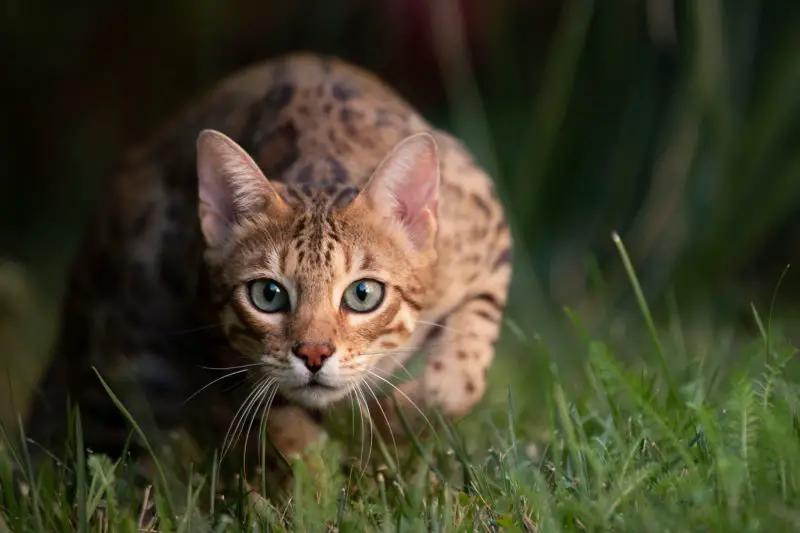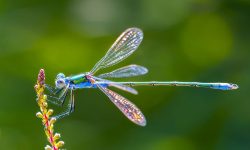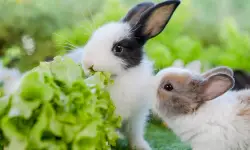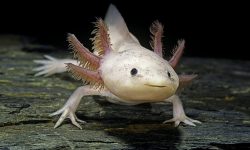Cats are known for being mysterious, independent, and—perhaps most of all—picky eaters. Many cat owners assume that felines only eat meat or kibble, but the truth is that their diet can be surprisingly varied. While cats are obligate carnivores, meaning they must eat meat to survive, they also enjoy certain fruits, vegetables, and even dairy products in moderation.
Understanding what cats eat is essential for their long-term health and happiness. A balanced feline diet supports strong muscles, shiny coats, good digestion, and optimal energy. Knowing which foods cats love—and which ones to avoid—can also help you prevent digestive problems, allergies, or toxicity.
In this comprehensive guide, we’ll explore 20 surprising foods cats actually enjoy, ranging from their natural protein sources to safe treats and vegetables. Whether you have a finicky kitten or a mature house cat, this list will help you feed your furry companion smarter and healthier.
Understanding a Cat’s Nutritional Needs

Unlike dogs or humans, cats cannot survive on a plant-based diet. They are true carnivores, evolved to hunt and eat small prey such as rodents and birds. Their bodies are built to extract nutrients primarily from animal protein and fat, not carbohydrates.
Here are the main nutrients cats require:
- Protein: Essential for building muscle, repairing tissues, and maintaining a healthy coat.
- Fat: Provides energy and supports brain and skin health.
- Taurine: A vital amino acid found only in meat; deficiency can lead to heart and vision problems.
- Vitamins and Minerals: Especially vitamin A, B-complex, and D, which cats cannot synthesize efficiently from plants.
- Water: Hydration is critical, as cats are prone to urinary tract issues.
While most of their diet should consist of meat, some cats enjoy small amounts of plant-based or dairy foods. Let’s explore the 20 favorites that often surprise cat owners.
20 Surprising Foods Cats Actually Enjoy
1. Chicken
Chicken is one of the most common and beloved proteins in a cat’s diet. It’s high in lean protein, easy to digest, and packed with essential amino acids like taurine. Cooked chicken breast—without skin, bones, or seasoning—is a perfect treat or meal topper.
Never feed raw or heavily seasoned chicken, as it can contain harmful bacteria or excess sodium. Cats often prefer shredded pieces served warm, mimicking the temperature of freshly caught prey.
2. Turkey
Like chicken, turkey is a lean and healthy meat source. It’s full of protein and low in fat, making it ideal for weight management. Cats love the rich flavor and soft texture, especially when lightly cooked or boiled.
Avoid processed turkey products like deli meat, which contain salt and preservatives. Homemade cooked turkey is the safest and tastiest choice.
3. Beef
Beef offers a slightly stronger taste that many cats find irresistible. It’s rich in iron, zinc, and B vitamins that support energy and red blood cell production. Small chunks of cooked lean beef can add variety to your cat’s protein rotation.
Always cook beef thoroughly and remove excess fat. Ground beef, when prepared without oil or seasoning, is a quick, nutritious supplement to their regular meals.
4. Fish (Salmon, Tuna, Sardines)
Fish is one of the most irresistible foods for cats. Salmon and tuna, in particular, are high in omega-3 fatty acids, which support heart health, skin, and coat shine. Sardines are also beneficial in small amounts due to their calcium and vitamin D.
However, fish should not be a cat’s main food source—it lacks certain nutrients found in other meats. Feed small portions once or twice a week, and always cook or choose canned fish packed in water (never oil or salt).
5. Eggs
Eggs are an excellent source of protein, biotin, and vitamin D, making them a nutritious addition to a cat’s diet. Many cats love scrambled or boiled eggs because of their soft, savory texture.
Always cook eggs fully to eliminate the risk of salmonella. Feed a small amount occasionally—too much egg can add excess fat and calories.
6. Liver
Liver is a nutrient powerhouse for cats, loaded with vitamin A, iron, and essential amino acids. It mimics the natural prey organs that wild cats eat in the wild.
However, too much liver can lead to vitamin A toxicity, so serve it only occasionally and in small portions. Cooked chicken or beef liver once every few weeks is a delicious, healthy treat.
7. Shrimp
Shrimp is a seafood favorite for many cats, offering a unique flavor and high protein content. It also provides iodine and phosphorus, which are good for thyroid and bone health.
Feed cooked shrimp without shells or seasoning as an occasional treat. Frozen shrimp thawed and lightly boiled is both safe and appealing.
8. Cheese
Surprisingly, many cats enjoy small amounts of cheese, especially varieties like cheddar or mozzarella. The creamy texture and mild flavor appeal to their taste buds.
However, most adult cats are lactose intolerant, so cheese should be offered in moderation to avoid stomach upset. A tiny cube occasionally can be an enjoyable indulgence for dairy-loving felines.
9. Yogurt
Plain, unsweetened yogurt contains probiotics that can aid digestion and support gut health. Many cats tolerate it better than milk because the lactose has been partially broken down during fermentation.
A teaspoon of plain Greek yogurt once in a while can be a cooling, nutritious snack. Avoid flavored or sweetened varieties, which often contain harmful artificial ingredients.
10. Pumpkin
Pumpkin is one of the best natural digestive aids for cats. The fiber in pumpkin helps regulate bowel movements, preventing constipation or diarrhea.
You can offer plain, cooked pumpkin or canned pure pumpkin (without spices). Mix a teaspoon into their food for added flavor and digestive support.
11. Peas
Peas are commonly found in high-quality cat food because they’re packed with plant-based protein, fiber, and vitamins A and K. They also add texture and mild sweetness cats enjoy.
Offer a few boiled peas as a treat or mix them into wet food. Peas are gentle on digestion and provide variety in the diet.
12. Carrots
Cooked carrots are another safe vegetable cats can enjoy. They are high in beta-carotene, which promotes good vision and immune function.
Always cook or steam carrots before feeding, as raw ones are too hard to chew. Offer small, soft pieces occasionally for a nutritious change of pace.
13. Green Beans
Green beans are a great low-calorie snack for cats who need to maintain a healthy weight. They are high in fiber and can make your cat feel full without adding fat.
Steam or boil them until soft, and serve without salt or butter. Some cats even enjoy them mixed into wet food for added crunch.
14. Spinach
Spinach is safe for most cats and contains essential vitamins, including A, C, and K. It’s also rich in iron and magnesium.
However, spinach should be avoided for cats with urinary or kidney issues because it contains oxalates that may interfere with calcium absorption. When fed occasionally, it makes a healthy green addition.
15. Blueberries
Blueberries are one of the few fruits cats can safely eat. They’re full of antioxidants that support immune health and fight cell damage.
You can offer one or two fresh or frozen blueberries as a small treat. Some cats enjoy the texture, while others prefer mashed fruit mixed into wet food.
16. Watermelon
Many cats are curious about watermelon, especially on hot days. It’s safe, hydrating, and refreshing thanks to its high water content.
Remove all seeds and rind before feeding, and give just a few small chunks. Watermelon offers vitamins A and C while helping your cat stay hydrated.
17. Apples (Without Seeds)
Like dogs and rabbits, cats can eat apples safely as long as the seeds and core are removed. Apples provide fiber and vitamin C while being naturally sweet.
Offer thin, peeled slices or tiny cubes as an occasional fruit treat. Avoid canned apples or applesauce with added sugar or spices.
18. Oatmeal
A surprising favorite for some cats, oatmeal contains fiber, iron, and vitamin B. When cooked plain with water, it can be a soothing, gentle food for cats recovering from illness or with sensitive stomachs.
Serve a teaspoon of warm oatmeal once in a while. Avoid adding milk, sugar, or flavorings, as cats can’t digest them well.
19. Rice
Cooked rice, particularly brown or white rice, can help soothe upset stomachs. It’s easy to digest and can be mixed with boiled chicken for a simple homemade meal.
Feed small portions occasionally; rice is a filler and should not replace protein sources. It’s most useful during short-term digestive issues.
20. Catnip and Cat Grass
Catnip and cat grass aren’t traditional foods, but cats love them just the same. Catnip excites and stimulates playfulness, while cat grass helps with digestion and hairball control.
Offering cat grass gives your indoor cat a safe outlet for chewing plants, which prevents them from nibbling toxic houseplants. Both are healthy, fun additions to a cat’s environment and diet.
Foods Cats Should Avoid
Some foods can be harmful—or even deadly—to cats. Always avoid feeding the following:
- Onions, garlic, and chives – can cause anemia.
- Chocolate and caffeine – toxic to the heart and nervous system.
- Grapes and raisins – cause kidney failure.
- Raw fish and raw eggs – risk of bacteria and enzyme interference.
- Alcohol and xylitol – extremely poisonous, even in small amounts.
Feeding Tips for a Healthy Cat
- Prioritize meat-based protein. Cats require animal protein to thrive.
- Offer variety. Rotate proteins and safe vegetables to keep meals interesting.
- Avoid overfeeding treats. Treats should be less than 10% of daily calories.
- Provide fresh water daily. Cats often have low thirst drive, so hydration is key.
- Consult your vet. Always check with your veterinarian before introducing new foods.
FAQs About What Cats Eat
Can cats eat dog food?
No. Dog food lacks taurine and essential nutrients cats need, so it’s unsafe for long-term feeding.
Do cats need vegetables?
Not necessarily, but small amounts can provide enrichment and extra nutrients.
Can cats eat dairy products?
Some cats can tolerate small amounts, but most are lactose intolerant. Stick to lactose-free or fermented dairy like yogurt.
Is raw feeding safe for cats?
Only if done carefully with veterinary supervision. Raw diets can harbor bacteria like Salmonella if not handled correctly.
How often should cats eat?
Adult cats do best on two to three small meals a day, while kittens may need more frequent feeding.
Conclusion
Cats are true carnivores at heart, but they also have a surprisingly broad palate. From savory meats like chicken and beef to sweet treats like blueberries or watermelon, a variety of safe foods can enrich their diet and strengthen your bond.
Understanding what cats eat helps you provide balanced nutrition, prevent health issues, and make mealtime exciting for your feline friend. With these 20 surprising foods cats actually enjoy, you’ll be able to keep your cat healthy, satisfied, and purring every day.






